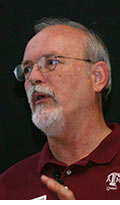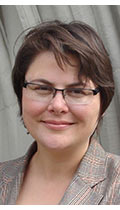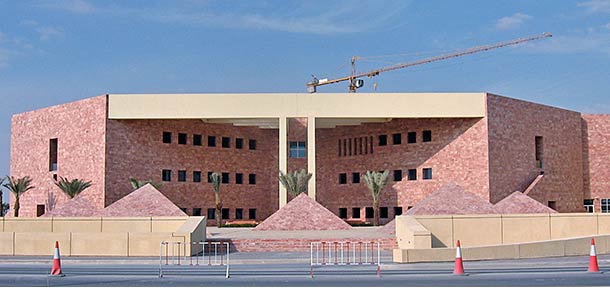CoSci professor heads Qatar building energy use project
 John Bryant
John Bryant
 Mardelle Shepley
Mardelle Shepley

Zofia Rybkowski
Disparities between the energy performance potential and actual energy use of four buildings in Qatar and the causes of those disparities are being investigated by a Texas A&M College of Architecture research team led by John Bryant, an associate professor of construction science who also serves on the mechanical engineering faculty at Texas A&M University at Qatar.
Bryant, the project’s principal investigator the 2-year, $665,000 study underwritten by the Qatar National Research Fund is working with co-P.I.s Zofia Rybkowski, assistant professor of construction science, Mardelle Shepley, professor of architecture, and Alex Amato, head of sustainability of Qatar’s Green Building Council.
The energy use study will focus on the building that houses Texas A&M at Qatar; the 58-story RasGas tower, headquarters of a natural gas company; and two 2,000-square-foot residential buildings — one designed and constructed as a “green” building and the other built with standard construction techniques.
The subject buildings provide a range of human and building interactions that influence energy performance, said Bryant. Because previous studies have examined these types of buildings in other geographic settings, he said, the current study's results can be compared in a broader context.”
Researchers will use energy modeling software to determine the buildings’ energy use potential and install meters to measure their actual energy consumption.
“In cases where it is clear that there are significant differences, we will gather data to evaluate building maintenance and operation behaviors,” said Bryant.
Factors contributing to the difference, he said, could include the skill level of the facility management staff and tenant control of temperature, lighting and ventilation, he said.
“Oversized cooling systems in commercial and residential buildings in Qatar are common,” he said. “Once installed, these systems essentially run ‘wild’ with few or no trained personnel to operate or maintain them.”
“We expect to find buildings are not achieving their energy goals because of a disconnect between a building’s design intent and user operations, a common impediment to energy-efficient building use,” said Bryant.
Solutions, he said, might include avoiding building technology that requires skilled management or resources that the user is unable to provide and involving building operators and facility managers in the energy system design process.
“This project will be the first to acknowledge the important role building maintenance personnel and occupants play in the effectiveness of buildings’ sustainable energy systems,” said Bryant. “The data will set benchmarks that will impact protocols for buildings in Qatar and internationally.”
Previous post
Next Post
Tags
- architecture
- construction science
- energy
- global college
- interdisciplinary
- partnerships
- research
- sustainability
Related Posts

College symposium spotlights faculty research Oct. 24

Oct. 29 symposium spotlights college, faculty research

Oct. 23 symposium spotlighted college, faculty research
Vanegas organizes international confab in Mexico City

Research, creative work presented at annual symposium
Follow Us
Facebook Twitter Vimeo Youtube Flickr RSS
Recent Posts

Planning prof heads study of disaster housing aid

A message from the dean

Former student remembered as expert planner

Leading educator named new head of Architecture Dept.

 The Texas A&M Engineering Building at the university's Qatar campus is one of four buildings in a study investigating building energy performance.
The Texas A&M Engineering Building at the university's Qatar campus is one of four buildings in a study investigating building energy performance.



_thumbnail_small.png)
